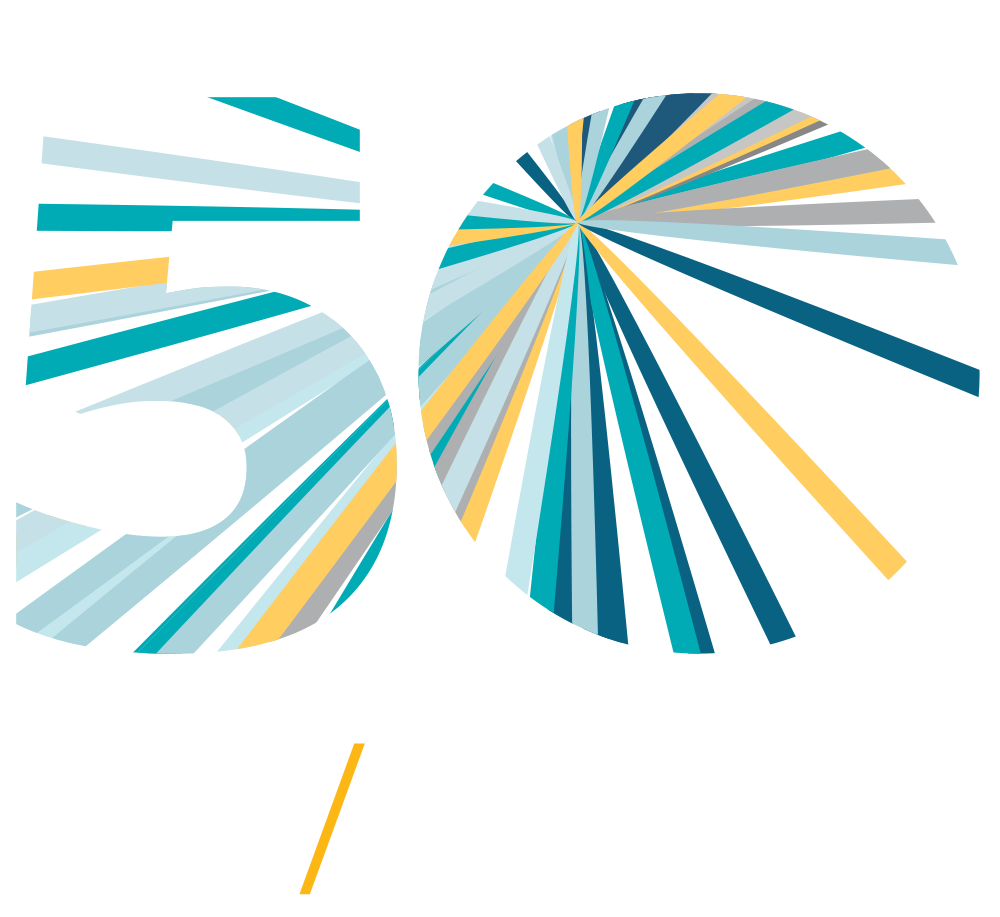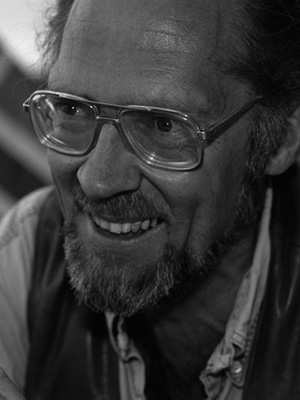Pioneers
The plans to create a university would have remained a dream had it not been for the efforts of all its pioneers. The pioneers were young, driven and hardworking people who came to Tromsø to take part in the northern education adventure. The pioneers presented here were hired to academic positions during the first years of the university’s existence and/or contributed significantly to the academic fields at the educational institution. We owe them our deepest gratitude.
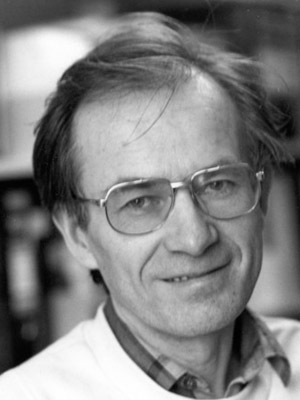
Asgeir Brekke (born 1942) is from Lesja in Oppland County. He played a key role in building the physicist community in Tromsø when the university was established. He gained his Ph.D. from UiT in 1975 and became a professor of physics in 1991. Currently, he is also an adjunct professor at the University of Svalbard (UNIS).
Brekke’s academic career has almost in its entirety focused on understanding the northern lights - a remarkable natural phenomenon.
He played an important role in the scientific organization EISCAT (European Incoherent SCATer), which operates three incoherent scatter radar systems in Northern Scandinavia and one on Svalbard. Brekke was one of the main people involved in establishing these radar systems at the end of the 1970’s, especially on Svalbard. At present, EISCAT has member institutes in seven other countries and Brekke deserves the credit for extending the collaboration to Japan and China. He also ensured important collaboration agreements with Ukraine and Russia.
Throughout his career, Brekke committed to producing popular science on northern lights and the mythology and cultural history tied to them.
“Northern lights have a physical explanation. However, most people find the phenomena so fascinating, so I wanted to convey something about the northern lights beyond the mere physical explanation. When you start talking to people, they always have some kind of interpretation of the northern lights,” he explained in a prior interview.
Brekke’s research focused on the physics of the ionosphere, especially the coupling between the neutral atmosphere and the ionosphere. He wrote several books, newspaper articles and scientific papers, including a textbook on the upper polar atmosphere. In 1997, he received the Research Council of Norway’s Award for Excellence in Communication of Science for his abilities to disseminate research.
The 75-year-old still works at the university as professor emeritus.
(Sources: the UiT Archive, Jensen, E. B., & Hald, M. (2015). Pionerer i realfag og teknologi. HSL Printing Office, UiT the Arctic University of Norway, Wikipedia)
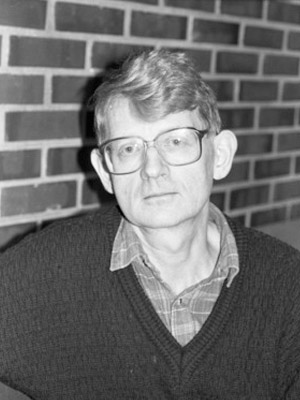
Tor Dahl (born 1938) was, from the very beginning, an important figure at UiT’s chemistry department. He arrived in 1971 together with many other Southerners who moved to Tromsø to fill positions at the new university. Dahl came from a Ph.D. position at the University of Oslo and when he moved to Tromsø, UiT had not opened a chemistry program yet.
In the spring of 1973, Dahl helped design the university’s elementary courses in chemistry. It had not been resolved whether the courses were going to be part of the medical program or be part of a separate chemistry program. Dahl argued for the latter and convinced the university.
Dahl had several political commitments at the university, for example, he was the first chairman of the Curriculum Committee which was established in 1974. It was directly under the University Board and dealt with issues regarding studies, regulations and curriculum.
“This was very exciting work. I learned a lot about education,” said Dahl in a former interview.
He was head of the Department of Mathematics and Natural Sciences from 1985-1987 and member of the University Board and the University Assembly from 1976 to 1981.
A few years after his arrival, the university established an X-ray crystallography group, which was Dahl’s field of expertize. In an earlier interview, he expressed that the university supported the development of the chemistry department at the end of the 1970’s and beginning of 1980’s:
“But there was strong competition for the positions. From 1979-1981, I was part of the University Board and each year we had intense discussions regarding the distribution of the university’s newly funded positions.”
Dahl was a member of the university’s interim board on two occasions and on one of them, he helped plan the university’s pharmacy program. Dahl had a passion for subject didactics and in an earlier interview, he expressed that the university should decrease the gap between the natural sciences and didactics or pedagogy.
(Sources: E. B., & Hald, M. (2015), Pionerer i realfag og teknologi. HSL Printing Office, UiT the Arctic University of Norway)
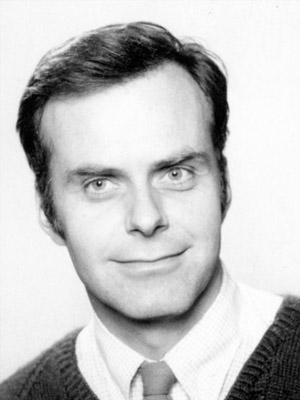
Kristian B. Dysthe (born 1937) studied mathematics and physics at the University of Bergen. He was part of UiT’s math department from the very beginning.
He was hired to the university by Olav Holt, rector at that time, and moved to Tromsø, led by his own adventurousness. He started out as an independent researcher in 1972, but the same year he became the university’s first hired professor of applied mathematics. During those first years, he was a member of the University Board and the University Assembly.
The interim board was responsible for the early planning of the university and aimed to establish a large department for mathematics, especially applied mathematics. Nevertheless, according to Dysthe, it was a constant struggle to build and expand the department because all the faculties and departments were competing for the same funding. He made this apparent in an earlier interview. During the first years, the university created three positions in pure mathematics.
“There were many conflicts tied to the further development of the department of mathematics. There was such a strong competition between the applied and pure mathematicians. It was a great relief when we finally reached a compromise we could all accept. In Tromsø, we divided the department into four sections; algebra, analysis, statistics and applied mathematics,” said Dysthe.
Dysthe’s research focused on geophysical fluid dynamics and wave theory. For example, he created a simulation of nonlinear wave-models which can explain why some waves become exceptionally big and threaten safety at sea. This work was partly done in collaboration with Karsten Trulsen.
During Dysthe’s first years in Tromsø, he represented his department in the Research Council of Norway (NAVF). For all of 11 years, he tried to establish a research group of physical oceanography at the university, but his goals were never fulfilled.
Dysthe was a member of the Norwegian Academy of Science and Letters. In 1993, he moved home to Bergen due to family matters and became a professor at UiB. He retired in 2007.
(Sources: E. B. & Hald, M. (2015), Pionerer i realfag og teknologi HSL Printing Office, UiT the Arctic University of Norway)
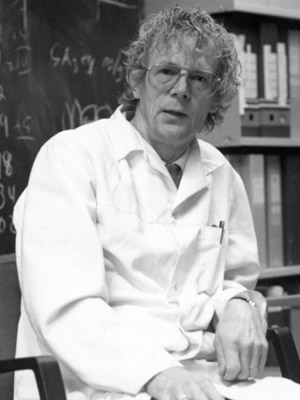
Olavi Junttila (born 1942) from Finland was hired at the university in January 1973, one year after its official opening. He helped design the new university’s biology program.
Junttila came to Tromsø from a position at the Norwegian University of Life Science (NMBU) in Ås. He explained in a former interview that NMBU was an important collaborator when developing the biology program at UiT. The program immediately attracted many students.
“Tromsø already had an established biology group before the university opened, for example at Tromsø Museum and the Marine Biological Station. That was a great advantage, especially to my field. The biology program had an easy start in Tromsø, also because it was established at an early stage and quickly attracted Master’s students,” explained Junttila.
He was appointed professor of plant physiology in 1980 and had many political commitments at the university in the first years; He was head of the Department of Biology and Geology and a member of the University Board.
Junttila focused on applied research linked to horticultural and agricultural plants and forests.
"I have mostly dealt with plant’s reactions to climate and climate factors and the impact of climate factors on plant development. It was in view of this type of research that the University of Tromsø received the climatic laboratory at Holt,” explained Junttila.
He was a member of the Research Council of Norway’s program committee for biotechnology.
(Sources: E. B., & Hald, M. (2015). Pionerer i realfag og teknologi. HSL Printing Office, UiT the Arctic University of Norway)
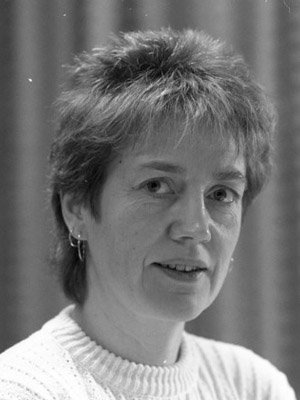
Sylvia Labugt (born 1943) came to Tromsø in 1973 because she thought the new university seemed very appealing. She started out as a senior secretary at the Department of Biology and Geology and became the administrative manager of the same department in 1978, a role she filled until 1997. She was also a member of the University Assembly.
She witnessed many restructurings at the university, also at the Department of Biology and Geology. Labugt took an active role in the process of establishing the Faculty of Mathematics and Natural Sciences and became the faculty’s first director in 1997.
“It was exciting. I was the faculty director until 2005,” explained Labugt in a previous interview.
She was pleased when the university changed to a faculty structure and believes that it benefited the natural sciences.
“We could not remain small and fragmented like before. We followed, and continue to follow, the same rules and regulations as other departments and the programs had the same structure and often overlapped. I believe the natural sciences have developed excellently. We have followed the trends and we have generated leading scientists in various fields. My only regret is that the biologists disappeared as a consequence of the merger with Tromsø College and the establishing of the Faculty of Natural Sciences and Technology.”
Labugt retired on the 5th of December 2013, a couple of weeks after her 70th birthday and exactly 40 years after she started her long career at UiT.
“I had the most fun when we established the new faculty at the end of the 1990’s. It was a thrilling period and an exciting project to be involved in. I would also like to emphasize the wonderful work environment we had at the old department and at the new faculty as well. Another remarkable experience was when the young Norwegians discovered the oil age. In the 1970’s and early 1980’s, we only had a handful of geology students and they all had a genuine interest in nature. They would wear Fjellreven anoraks, leather boots and carry a knife in their belt. When the semester started in 1980/81 we witnessed something very strange; we were overrun by young men in suits and ties and executive briefcases! We could not believe our own eyes. Finally, I would like to say that I have been very fortunate to be part of building the university from its very beginning,” said Labugt in her interview.
(Sources: E. B., & Hald, M. (2015), Pioneer of Natural Sciences and Technology, HSL Printing Office, UiT the Arctic University of Norway)
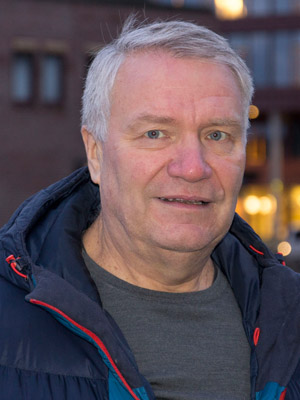
Terje Ferdinand Olsen (born 1951) from Lebesby municipality in Finnmark was hired as an associate professor at Tromsø College in 2005. He became dean of the Section for Business Administration and Engineering in the same institution and was later head of the UiT Department of Engineering and Safety.
Olsen’s class was the first to graduate with a degree in fishery science in 1972 and was thereby part of developing the program from scratch.
Olsen also helped create fishery science programs for high schools in Troms during the 1980’s and towards the end of the decade, he participated in the development of a three-year maritime engineering program at Tromsø Maritime College. He devoted much of his time to maritime safety and security training. In 2006, he helped design two UiT programs in collaboration with the University of Stavanger; a three-year program of societal safety and a three-year engineering program in safety and environment.
Olsen was a member of the working committee of the National Council for Engineering and participated in the development of academic disciplines and programs for high schools on a national level.
“In Norway, there are only two professors and twelve Ph.D. graduates of fishery science. Yet, the fishing industry is one of the county’s largest industries that brings in over 100 billion NOK annually and employs almost 100,000 people. One of my greatest wishes was that the new university in Tromsø be able to protect and develop this maritime field. As the country’s sole university to offer vocational degrees for the maritime industry, it has a unique opportunity to become the nation’s leading centre in its field. The university has to seize this opportunity!” said Olsen in an earlier interview.
At present, Terje Ferdinand Olsen is head of the UiT School of Aviation. For the past years, he has been responsible for developing and running the pilot training programmes.
(Sources: E. B., & Hald, M. (2015). Pionerer i realfag og teknologi. HSL Printing Office, UiT the Arctic University of Norway, recent interview, the UiT Archive)
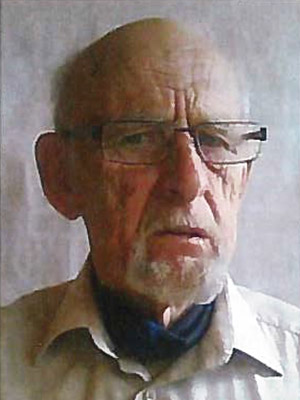
Knut Skog (born 1936) from South-Varanger was part of the information technology community in Tromsø from the very beginning and in 1972, he was hired as UiT’s first IT professor.
Prior to that, Skog was a researcher, operations manager and senior researcher at the Norwegian University of Science and technology’s (NTNU) Section for Information Technology and SINTEF from 1965-1971. At SINTEF, he helped develop NTNU’s first electronic digital calculator. He also devoted ten years of his career to developing a well-functioning programming language.
Skog came to the University of Tromsø in 1972 to strengthen the region’s ICT competence and to enjoy the beautiful Northern Norwegian wilderness. His first assignment was to gain approval for IT services and the associated operations and assistance as a separate academic field at the university. He succeeded and was soon in the process of establishing his own section and hiring academic staff. The information technology section found its place next to the sections for mathematics, physics and chemistry. During the first years, he devoted his time to the experimental aspect of information technology research. According to Skog, the program attracted many students from the very beginning.
In 1976, he initiated a project with Kai Olsen to use a microcomputer, a so-called Mycron 1, to file and store patient data at the health clinic in Storsteinnes in the Balsfjord area.
Skog was a board member of Univac Users Association Europe from 1968 to 1970.
(Sources: E. B. & Hald, M. (2015), Pionerer i realfag og teknologi, HSL Printing Office, UiT the Arctic University of Norway)
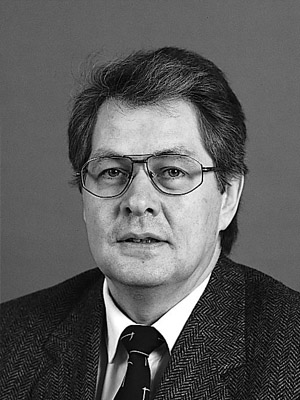
Tore Vorren (1944–2013) was born in Vadsø and grew up in Tromsø. In 1973, he started as an assistant professor at the UiT Department of Biology and Geology, partly because he wanted to participate in the creation of the city’s new university.
Vorren was appointed professor of marine geology in 1979 and would later become head of the Department of Biology and Geology, dean of the Faculty of Mathematics and Natural Sciences and the university’s pro-rector.
Tore O. Vorren had a 40-year-long career at the university and was a driving force behind national and international marine geological research and education. His research on the geology of the Norwegian continental shelf and the Barents Sea as well as on Norwegian climate change and ice age development attracted international attention and became textbook material.
In a former interview, Vorren explained that the geology program attracted relatively few students in the first years. However, in the fall of 1981, the student numbers increased significantly because the oil drilling in the Barents Sea had started.
“In our first student-orientation meeting, we met a fully packed auditorium. The students were very happy to study geology. It was a turning point in many ways, also for the further development of the geology program. We had to take into consideration the fact that our students first and foremost planned a career related to the oil industry,” said Vorren. He had several political commitments at the university, including chairing the University Center in Svalbard and the Science Center of Northern Norway.
Vorren had a soft spot for the Arctic and researched the geology of the Barent Sea and the Arctic Ocean. He published the novel Two men in the Ice in 1993. The same year, it was decided that the Norwegian Polar Institute would move to Tromsø, something Vorren had worked to achieve.
He chaired the board of the Roald Amundsen Center for Arctic Research and received the center’s polar statuette in 2001. He received several awards, including the Fram Committee’s Nansen Award for polar research in 2005 and the Brøgge Award in 2011. Tore Vorren passed away in June 2013.
(Sources: Bråstad Jensen, E. & Hald, M. (2015), Pioneers of natural sciences and technology, HSL Printing Office, UiT the Arctic University of Norway)
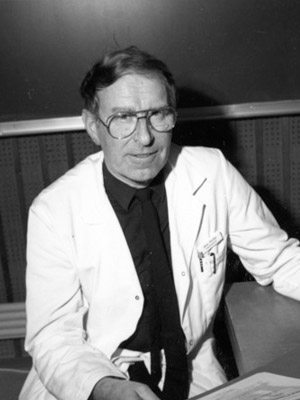
Arne Nordøy (born 1933) from Tromsø is a professor of general medicine and was involved in planning the medical program in Tromsø soon after Stortinget (the Norwegian Parliament) enacted the establishment of the university in 1968. Nordøy helped design the university’s medical program and the new hospital, which is currently named the University Hospital of Northern Norway (UNN).
Nordøy served as Dean of the Faculty of Medicine from 1971-1975 and chaired the curriculum board from 1984-1986.
“In the early 1970’s, the region’s largest health issue was the high incidence of cardiovascular disease. Statistics showed that Finnmark, Troms and Nordland had the highest occurrence of heart attacks in Norway. We actually topped the entire western society at the end of the 1960’s and early 1970’s,” said Nordøy in an earlier interview.
These statistics formed the grounds for initiating the Tromsø Study in 1974. (Norway’s largest demographic health survey.) Nordøy had a central role in initiating and conducting this long-term public health survey.
“People definitely paid closer attention to their diet, etc., as a result of the Tromsø Study. Since then, the death rate from heart attacks before 75 years has declined by almost 50 percent,” said Nordøy.
He was also one of the scientists in Tromsø who studied Omega-3 fatty acids. Nordøy was first and foremost interested in the marine fatty acids effect on thrombosis. When asked what he would want to highlight from his academic career in Tromsø, he answered the following:
“The first medical students who graduated in Tromsø are at the top of my list. I believe they got a good start in life. Second, was the Tromsø Study and everything that followed. The study became far more extensive and long-lasting than first anticipated.”
From the 1990’s and onwards, Nordøy worked to establish the St. Elisabeth Center in Tromsø.
(Sources: the UiT Archive, Gamnes, J. & Rasmussen, K. (2013), Fra Fagområdet medisin til Det helsevitenskapelige universitet. Orkana Forlag AS)
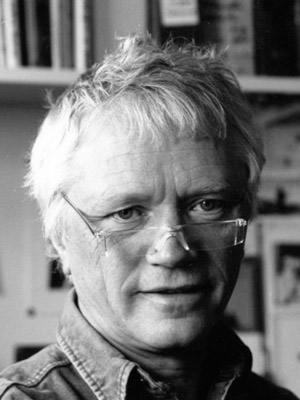
Rolf Seljelid (born 1934) from Levanger is still an employee at UiT. He graduated as a medical doctor in Bergen in 1959. He obtained his Ph.D. from Karolinska Institutet in 1966 where he also worked as a professor of pathology. He was a guest researcher for an extended period at the Rockefeller Institute and in the spring of 1972, he arrived at the newly established university in Tromsø as professor of pathology. From the summer of 1972 to the spring in 1974, he was head of the Department of Medical Biology. He came from a position of chief physician at the Norwegian Radium Hospital. In an interview with the university from 2008, he explained that he moved to Tromsø for several reasons:
“I had relatives in Northern Norway. When I arrived in Tromsø, it was like coming home. I also had this naïve idea that it would be possible to develop a world-leading research environment in Norway and first and foremost Northern Norway. We already possessed the key ingredient which was gifted people.”
Seljelid believed that the University of Tromsø had managed to recruit Norway’s best medical scientists after its establishment. In the beginning, he mainly focused on establishing his own and others’ research.
“I have always believed that research is a university’s most important objective. Universities are the only arena within our society that can provide independent research,” he explains.
Seljelid also has a passion for fine arts. Together with some of his coworkers at the university, he established an art association called Galleri 71 in the non-experimental science building in the early 1970’s. During its 10 years of existence, the gallery had the second highest sales in Norway, according to Seljelid.
He served as dean of the Faculty of Medicine from 1975-1977. He was also highly involved in the local society, providing feature articles to the newspaper Nordlys for more than 30 years. He wrote these articles to create ties between academia and the general society.
He wrote General Pathology for Health Sciences, a concise textbook on pathology. He also wrote three novels. Seljelid was a board member of the Norwegian Cancer Society and chairman of the Norwegian Cancer Society’s Scientific Advisory Board.
(Sources: Gamnes, J. & Rasmussen, K. (2013). Fra Fagområdet medisin til Det helsevitenskapelige universitet. Orkana Forlag AS, recent intervju).
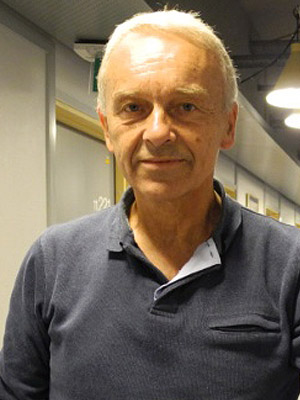
Olav Helge Førde (born 1946) from Høyanger in Sogn og Fjordane moved to Tromsø in 1971 for his medical residency. He was quickly involved in designing and planning the new medical program in Tromsø. In an earlier interview, he pointed out that the medical program became a success because the university managed to recruit highly skilled candidates from the very beginning.
“I believe many of the new employees felt that the medical faculty welcomed new ways of thinking. This appealed to people such as Arne Nordøy, Rolf Seljelid, Ole D. Mjøs and not least Knut Rasmussen. Noone expected these skilled people to continue to stay in Tromsø, but they did. They chose to live their lives here in Tromsø. Now, the University of Tromsø exports highly skilled competence to Southern Norway,” said Førde.
He played an important role in establishing the university’s public health studies and became a professor of social medicine in 1983.
“I suppose it is correct to say that I have done a bit too much of many things. I became more fascinated with political challenges and responsibilities than research.”
On two occasions, he was the university representative on the board of the former regional hospital and from 1993-1996, he managed the section for medicine and health issues at the Research Council of Norway. From 2001-2005, Førde was chairman of the board of Northern Norway Regional Health Authority and from 2007-2008, he served as dean of the Faculty of Medicine.
Førde was one of the initiators behind the Tromsø Study and also had a career as a football player at Tromsø football club (TIL) from 1972-1974.
(Sources Gamnes, J. & Rasmussen, K. (2013), Fra Fagområdet medisin til Det helsevitenskapelige universitet. Orkana Forlag AS., the UiT Archive).
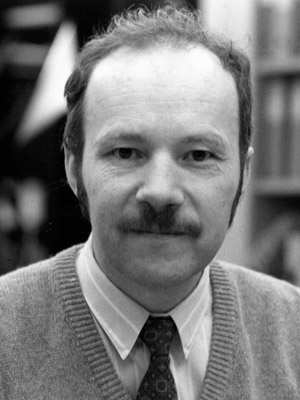
Erik Haakon Egeberg (born 1941) from Olso helped build the Russian program at UiT. He graduated from the University of Oslo and moved to Tromsø for work early in 1975.
“I chose Russian as a major, which was a very uncommon subject back then, and I was prepared to move wherever there was a job available. I had never been north of Trondheim when I applied for the position in Tromsø. It was quite an experience to arrive in the pitch darkness of the arctic city. I have been happy here in Tromsø,” said Egeberg in a past interview.
He was one of the first Russian teachers at the university and for the first 10 to 15 years, it was only he and Ingvild Broch who was also hired to the Russian program.
“It was clearly limiting that both the department of humanities and the Centre for Russian Studies were so small. Almost no one in Tromsø knew Russian back then. In the beginning, we were unable to offer advanced Russian courses because we lacked staff,” explained Egeberg.
He served as dean for two periods and was a member of several boards and committees at the university. He was also on the board of the Norwegian Association of Researchers. Egeberg kept busy in other ways as well:
“When I arrived in Tromsø there was, like most places, a great demand for knowledge about Russian politics, society and culture. I gave several presentations on these topics in Tromsø and around the country. In the beginning, many of the university employees believed that the university should spread knowledge throughout Northern Norway. So, what we did outside the university walls was just as important as what we did on the inside.”
Egeberg is also a writer and has translated Russian literature to Norwegian. He is known for his contribution to the UiO collection Norwegian Literature on Slavic and Baltic Culture in the period between 1972 and 1995.
He is a member of the Norwegian Academy of Science and Letters and the Royal Norwegian Society of Sciences and Letters. He currently works at UiT as professor emeritus.
(Sources: Jensen, E. B. (2014). Universitetspionerene. HSL Printing Office, UiT the Arctic University of Norway, the UiTs Archive).
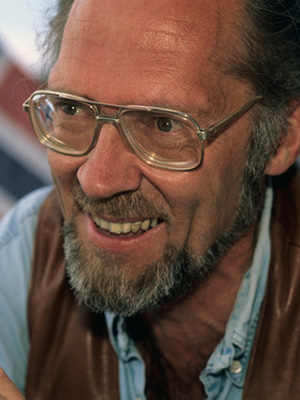
Nils Magne Knutsen (born 1943) from Kvæfjord graduated from UiO with a degree in Nordic Studies. He came to Tromsø in 1974 with a strong wish to develop the university.
“A dream came true when I was granted a research scholarship and could move north. It was both a great privilege and a great responsibility to be part of designing a program that would make it possible for young Northerners to pursue a higher education without moving south,” explained Knutsen in a former interview.
The university hired him to work with Northern Norwegian literature. According to Knutsen, the process of developing the curriculum in the mid-1970’s led to long and heated discussions amongst his colleagues.
“We agreed that the curriculum would have elements of Northern Norwegian literature. Our disagreements were long and intense because we felt a responsibility to manage the region’s cultural heritage and to provide young Northerners with an education that would help them navigate in a complex literary landscape. That responsibility weighed heavily on us,” he explained.
Knutsen wanted the students to be familiar with other parts of Northern Norway as well and worked hard to ensure funding for field trips.
“It was important to me that the university would not limit itself to Tromsø. It became an obsession to convince the university to take on a central role in raising awareness about living in Northern Norway. On good days, I flatter myself and think that I have contributed to a prouder generation of Northerners who don’t feel the need to conceal their dialect and roots. Of course, there are many others as well, who have played a part in this.”
Knutsen distinguished himself as a disseminator of Northern Norwegian literature and has given hundreds of presentations on Northern Norwegian culture and literature around Northern Norway. He also distinguished himself as an expert on the works of Knut Hamsun. He was one of the initiators of the Hamsun Days in Hamarøy in 1982 and he chaired the Hamsun Association from 1988-2000.
In 2014, Knutsen was appointed Knight 1st class of the The Royal Norwegian Order of Saint Olav for his dissemination of Northern Norwegian literature and cultural history. He received several awards including the UiT Teaching Award and the Peter Dass Medal. In 2012, he became professor of Nordic literature. Today, the 74-year-old is still associated with the university through his professor emeritus position.
(Sources: Jensen, E. B. (2014). Universitetspionerene. HSL Printing Office, UiT the Arctic University of Norway, Wikipedia, the UiT Archive).
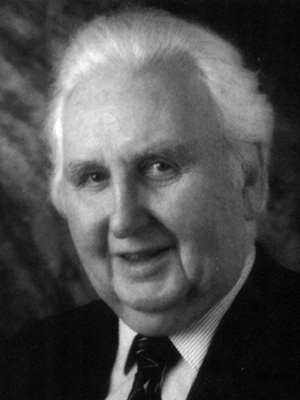
John Skog (born 1924) graduated from the University of Oslo with a teaching degree and came to Tromsø Teachers College in 1951. He taught mathematics, physics and chemistry. He developed an interest in organization and management, much because of his Christian background. This became evident from an interview Eivind Bråstad Jensen did with Skog in 2008. (Universitetspionerene, 2015)
Fresh out of university in 1951, Skog started as a teacher at Tromsø Teachers College. In 1957, he became vice-rector and in 1961, when he was 37 years old, he assumed the position as rector, a position he held for 30 years. While rector, Skog worked to develop a three-year teacher’s training program. In 1957, he was elected to chair the local teachers college association and he helped arrange the first teacher’s training conference in Tromsø.
“Consequently, I was elected to a committee commissioned by the Norwegian Teachers College Association, led by August Lange, which suggested developing a three-year teacher’s training program,” explained Skog in the 2008 interview.
Tromsø Teachers College merged with Tromsø College in 1994, which again merged with the university in 2009.
Skog was very active outside of the Teachers College as well. To many, he is known as the former deputy mayor of Tromsø, a position he held from 1995-1999. He was involved in the local politics for nearly 30 years, representing the Christian Democratic Party (KrF). He also held key positions in Tromsø Housing Association, including being chairman for 12 years.
John Skog was also a member of various church councils included in the Church of Norway. He passed away in 2013, at the age of 89.
(Sources: Jensen, E. B. (2014). Universitetspionerene. HSL Printing Office, UiT the Arctic University of Norway, www.itromso.no (2013). )
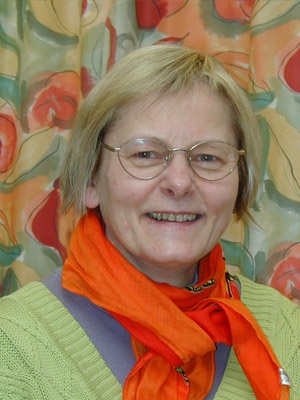
Siri Gerrard (born 1947) from Kristiansand has paved the road for women’s research and gender perspectives at UiT. She holds a degree in ethnography/social anthropology, sociology and social medicine from the universities in Oslo and Tromsø. She came to Tromsø as a graduate student in the spring of 1973.
“I moved here because the university emphasized research on local societies, which suited me as I had done my fieldwork in a small fishing village in Finnmark. Another important factor was that my advisor Cato Wadel had also moved to Tromsø. I entered a new, multidisciplinary department filled with dedicated students and teachers,” said Gerrard in a former interview.
Gerrard was one of many eager women, who in 1973 initiated a seminar on gender roles at the Department of Social Sciences.
“Later, we arranged several activities with support from the faculty board and the university board. We supplemented the reading lists with interesting feministic articles and invited guest lecturers from other universities both within and outside of Norway. The fact that we were in Northern Norway led to an early realization that gender and gender relations have to be understood in relation to both ethnicity and class.
Gerrard summarizes her role as a university pioneer in the following way:
“I was part of the university community in Tromsø but also a larger national community for women's studies, which among other things, resulted in the book series Women’s Living Conditions and Life Course. Throughout all these years, our work has been inspired by the feminist movement. I usually say that many people of my generation came to a university of possibilities.”
From 1982–1990, she worked at Finnmark Regional College where she was responsible for decentralized management development in the fishing industry. Here too, Gerrard was a pioneer in womens and gender research and later, she brought her valuable experience to the Norwegian College of Fishery Science.
Gerrard’s research focused on fishing communities in Norway and abroad, and emphasized culture and gender relations. Her work has always been based on the research of communities along the Finnmark coast and fishing communities surrounding the great leaks of Tanzania and Northern Cameroon. The latter years, she has devoted her research to gender, mobility and location.
In 1986, Gerrard received Finnmark County’s Gender Equality Award for her work on women in the fishing industry, and in 1997 she won the UiT Gender Equality Award. On the 1st of June the devoted social scientist became professor emerita at the UiT Center for Women’s and Gender Research.
“There are a number of tasks I need to complete, so I have checked in at work every day,” says a smiling Gerrard.
(Sources: recent interview, Jensen, E. B. (2014). Universitetspionerene. HSL printing Office, UiT the Arctic University of Norway, the UiT Archive).
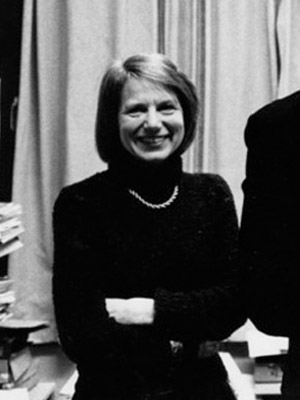
Ingvild Broch (born 1939) is, together with Erik Egeberg, considered one of the pioneers behind the Russian studies at UiT. She is also seen as an important figure in connecting Norwegian and Russian scientific groups and has assisted in UiT’s work to create strong and positive ties to North-West Russia.
In an interview with Eivind Bråstad Jensen in 2008, Broch explained that she moved to Tromsø by coincidence. Her husband, Ben Johnsen, showed his interest in a position at the UiT Department of Mathematics and suddenly the Oslo-based family received several visits from Tromsø. She was offered a temporary position as a scholar of Russian language and literature. She declined the offer but when UiT announced a permanent position in 1972, all her hesitations against moving were gone. For two years, she was the only teacher of Russian language at the university.
“Studying Russian at that time was a bit unique. The Soviet Union was still quite isolated. Not many people chose to study Russian, however, we always had a steady flow of students. They often expressed how the Russian studies opened up a whole new world to them,” explained Broch.
“We were very accommodating of students spread out in the region wanting to learn Russian. I remember I would supervise them over the phone. We had a clear understanding of our obligation to the region.”
During the first years, she arranged evening lectures in the center of town and her open workshops were very popular.
The collaboration between Norway and Russia was a red thread through Borch’s long career. She laid down a solid amount of work to develop a relationship between UiT and Pomor State University in Arkhangelsk, which UiT signed an extensive collaboration agreement with in 1991. She also had a number of assignments as an interpreter, for example with the police department.
Broch was chairman of the Humanities Research Council and also represented UiT in different committees for collaboration with Eastern Europe. From 1972-1994, she worked at the Department of Language and Culture. Many people also know her as UiT’s first research director, a position she served from 1994-2004.
In 1996, Broch was awarded an honorary doctorate from Pomor State University in Arkhangelsk (NArFU). In 1998, she received the Medal of Pushkin for her efforts to raise knowledge about Russian language and culture.
(Sources: E. B. Jensen. (2014), Universitetspionerene. HSL Printing Office, UiT the Arctic University of Norway, the UiT Archive).
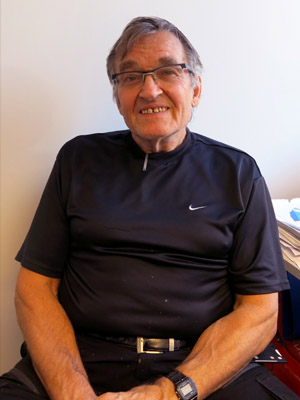
Thanks to Åge Haugslett (born 1942) from Balsfjord, UiT can offer engineering degrees today. He prevented Tromsø Maritime College from shutting down in the 1980’s and encouraged the college to establish an engineering program.
“If the maritime college had closed it would have killed the engineering community in Tromsø and UiT might not have had an engineering program today,” says Haugslett.
He started working at sea when he was 15 years old and did not pursue an education until he was 29. He graduated with a degree in marine engineering and economics and was quickly linked to the maritime programs in Tromsø.
Haugslett gained his Ph.D. from the Norwegian Institute of Technology in 1981 while he worked at the Research Institute of Fisheries Technology. The following year, he came to Tromsø Maritime College as an assistant professor.
In the 1980’s Norway discussed the future organization of its maritime schools. There were 8 maritime colleges and not all of them could survive.
“The debate was intense and lasted into the 1990’s. In the end, when the ministry had had its final say, Norway was left with 3 colleges. One of them was in Ålesund. The strategy in Tromsø was to develop a program with the same model as the engineering programs,” said Haugslett in a former interview.
He participated in designing the maritime studies as a member of the Council for Maritime Colleges. He was also a member of the Council for Engineering Colleges and in this way helped shape the Norwegian engineering programs as well.
“I came up with a model for how our teachers, who were engineers but not certified teachers, could gain the same education level as the civil engineers and qualify as assistant professors. We designed a supplementary program for this purpose on a national level.”
Haugslett became rector of Tromsø Maritime College in 1987, a position he held until 1994 when the college merged with Tromsø College. In 2009, he was hired as an associate professor at UiT.
A possible merger between the university and Tromsø College was discussed as early as the 1990’s. Haugslett supported the idea from the very beginning because he believed a merger would help the further development of the engineering and business and economics programs in Tromsø. The 75-year-old only retired last year.
(Sources: E. B., & Hald, M. (2015). Pionerer i realfag og teknologi. HSL Printing Office, UiT the Arctic University of Norway)
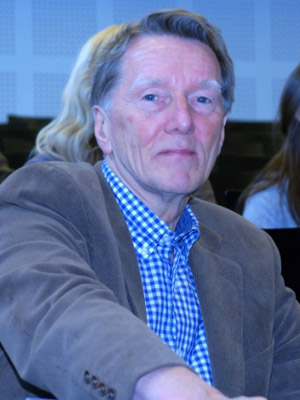
Asle Høgmo (born 1941) graduated with a degree in sociology and was quickly involved in designing the UiT pedagogy program. He moved to Tromsø in the summer of 1973 and was eventually appointed professor of pedagogy.
“When I arrived in Tromsø in 1973, I had limited academic experience, but I had a clear opinion of which direction I believed the field should take. Like many others of my generation, I was opposed to the established pedagogy, like I knew it from Oslo. That is also one of the reasons for why I moved to Tromsø,” explained Høgmo in a former interview.
The program they developed deviated significantly from the pedagogical studies at Blindern (UiO).
“The pedagogical studies at UiO had lost its good reputation. That is also why we replaced the word pedagogy with “education research”, which better describes the discipline.”
During the 1970’s, he participated in the Lofoten Studies together with scientists like Karl Jan Solstad. This research and development project changed the field of pedagogy.
Høgmo’s research focused on ethnic minorities' upbringing, education and cultural living conditions in Norway. He also published works of popular science on this topic. In 2005, he published the book Is a Multicultural Scool Possible?
(Sources: Jensen, E. B. (2014). Universitetspionerene. HSL Printing Office, UiT the Arctic University of Norway, the UiT Archive).
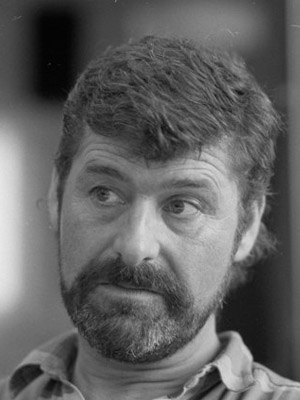
Terje Traavik (born 1946) from Sandessjøen is a professor of virology specialized in biotechnology.
He came to Tromsø in late 1976 because the idea of a new university in the north appealed to him. At first, his main task was to design the university’s study and research program and develop a section for diagnostic virology at Tromsø regional hospital.
“We were able to offer courses as early as in the spring of 1978 and by then we had also built a highly advanced laboratory for diagnostic virology testing. We accomplished everything very quickly and were filled with a wonderful pioneering spirit. Everyone was included. We wanted to show the Southerners and the rest of the world that we could achieve great things up north,” said Traavik in a former interview.
Like most others at the university in the 1970’s, Traavik was pulled into boards and committees on all levels.
“There were so few of us and we had to represent the university in many areas both nationally and internationally. I was only 33 when I came to Tromsø and it was such a God-given gift to be able to build a university from scratch. The pioneering period was really unique. Being part of it was overwhelming both emotionally and academically. It is hard to explain. Very few people get his opportunity,” he said.
Traavik completed his Ph.D. at UiT in 1979. He was one of the founders of the independent research foundation GenØk - Center for Biosafety. The center's vision is safe use of biotechnology.
During its three first years of existence, from 1998 to 2001, Traavik was the managing director before he transferred to being head of research. With the help of the Ministry and Foreign Affairs and NORAD, he recently established sister organizations to GenØk in several countries including Brazil, Zambia and China.
(Sources: Gamnes, J. & Rasmussen, K. (2013). Fra Fagområdet medisin til Det helsevitenskapelige universitet. Orkana Publishing House, the UiT Archive, Wikipedia).
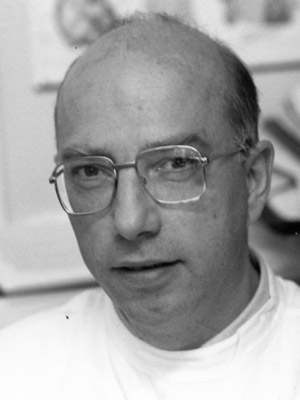
Dag Sørlie (born 1942) came to Tromsø as early as 1970 and commenced his research at the new university after only a couple of months. Sørlie quickly got teaching assignments in the medical program.
He was a professor of cardiac surgery and helped develop the university’s program for cardiac surgery in 1978.
In his opinion, there was at times too little focus on medical science and a bit too much focus on politics during the first years.
“Mao’s Little Red Book was important to many of the students and caused a lot of interruptions. On the other hand, I was politically active myself in the Norwegian Medical Asociation. I chaired the Norwegian Junior Doctors Association locally and nationally and I am a social democrat to my core,” said Sørlie in an earlier interview.
In 1998, Sørlie served as the university’s vice dean for education and from 1999 to 2002 he was vice dean for research.
Sørlie described the first years at UiT in an interview with the university in 2010:
“It was amazing to be part of the university during that period and to get the opportunity to develop myself and also contribute to an increased competence in the academic field. I had so much fun. The support and engagement from other colleagues was great!”
(Sources: Gamnes, J. & Rasmussen, K. (2013), Fra Fagområdet medisin til Det helsevitenskapelige universitet. Orkana Forlag AS., the UiT Archive, Wikipedia).
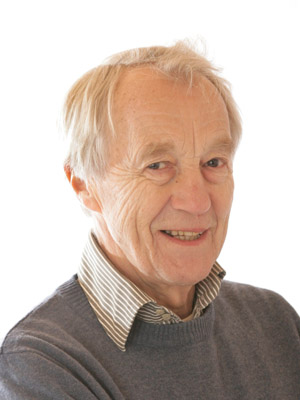
Karl Jan Solstad (born 1936) from Bodin municipality came to the University of Tromsø in 1972 as an assistant professor. In 1976, he became a professor of education. With Solstad’s efforts, pedagogy and education established an academic profile that was in harmony with the university’s general profile.
His interest in education and social sciences was fueled by the changes in the educational structure in the 1960s:
“The expansion to 9 years of mandatory school was not fitted for rural places, like traditional fishing communities in Northern Norway. It raised the question of how the new schooling system impacted young people’s choice of education and place of living and how this, in turn, affected the local communities. UiT created a new multidisciplinary approach to the social sciences, so it was natural for me to apply for a research position here,” explained Solstad in an earlier interview.
He quickly initiated larger education research projects where he questioned the school’s function in rural and remote areas. The Lofoten Project became his most renowned research project nationally and in part internationally.
The mandatory school curriculum of 1987 and 1994 emphasized local communities’ right to adjust the school’s organizational structure and content. There are reasons to believe that the curriculum was inspired by the results of UiT’s education research projects.
“The school was no longer going to have a passive presence, it was going to take an active role in the local society and childhood environment,” explains Solstad.
In 1982, he left the University of Tromsø for private reasons and continued his research on equal schooling opportunities, focusing on rural Norway, at Bodø Teacher’s College, Nordland Research Institute and while being an executive of education in Nordland county.
Publications like State School in Far-Off Corners (1978), Equity at Risk (1997), School and District: Teamwork or Conflict? (2006) and Rural Schools in West Norway (2009) confirm his strong engagement. Today, the 81-year-old is associated with Nordland Research Institute as a senior researcher.
(Sources: Jensen, E. B. (2014). Universitetspionerene. HSL printing Office, UiT the Arctic University of Tromsø, Wikipedia).
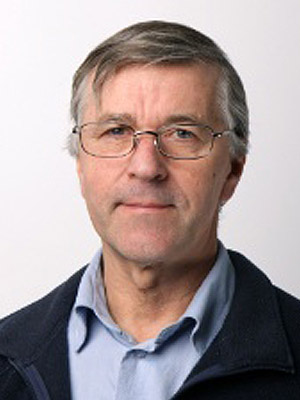
Georges Midré (born 1944) grew up in Stavanger. It was partly Yngvar Løchen, who later became rector, who recruited Midré to the newly opened university in 1972. Midré moved up from Oslo.
“It was an adventure to move here. We really had the feeling of being on an expedition to a foreign country. Although we had very little knowledge about Northern Norway, we were very motivated to “help”, or should we say “salvage” the region,” said Midré in an earlier interview.
When Midré moved to Tromsø, he was quickly involved in the practical development of the Department of Social Sciences and in the fall of 1972, the university could offer its first courses on sociology.
After a period of being away from the university, Midré was offered a permanent position in 1985. The following year, he became a professor of social policy.
Midré’s research focused on indigenous people and indigenous issues. He was the research coordinator for a research program called Maya Competence Building in Guatemala from 1990-2008. It addressed the Guatemalan elite’s view on poverty and social destitution. The program was run in a collaboration between the University of Tromsø and the University of San Carlos in Guatemala.
From 1995, Midré took on managing roles at the university. First, he was head of the Department of Social Sciences for one year, then he was dean of the Faculty of Social Sciences from 1997-1999. From 2006-2009 he went back to being the head of a department, only this time, it was the Department of Sociology.
Midré also had several political commitments. From 2006-2008 he chaired the Academic Council of the Forum for Development Cooperation with Indigenous People, a forum initiated on request by the Ministry of Foreign Affairs. The 73-year-old is still active in a professor emeritus position at the Department of Social Sciences.
(Sources: Jensen, E. B. (2014). Universitetspionerene. HSL Printing Office, the Arctic University of Norway, recent interview)
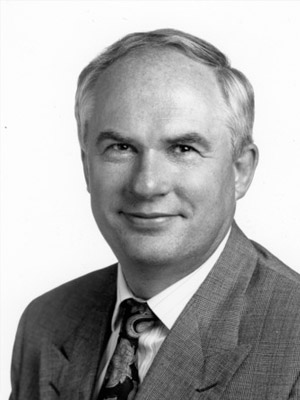
Geir Lundestad (born 1945) was born in Sulitjelma in Fauske municipality. After living in Oslo for many years, he longed to return back to Northern Norway.
“It was clear to me that I had to move back,” said Lundestad in a former interview.
He arrived in Tromsø in early 1974 hoping to participate in the creation of the new university. He was hired as an assistant professor of history when Olav Holt was rector. In 1976, he completed his Ph.D. at UiT with the thesis The American Non-Policy Towards Eastern Europe 1943-1947: Universalism in an Area Not of Essential Interest to the United States.
“I have always believed that the University of Tromsø needs two feet on the ground. One foot should be anchored in the local region. I never had any problem supporting that the history department should focus on Northern Norway. Someone has to write the region’s history and it is only natural that the university takes on that role. But there has to be another foot as well. I always expressed that if we want a reputable university, the academics need to look beyond the horizon of their own region and country and bring their focus to the rest of the world,” explained Lundestad.
He later became the university’s vice-rector. He also went from being a UiT professor to being director of the Norwegian Nobel Institute in 1990, a position he held until 2014.
(Sources: Jensen, E. B. (2014), Universitetspionerene, HSL Printing Office, UiT the Arctic University of Norway, Wikipedia)
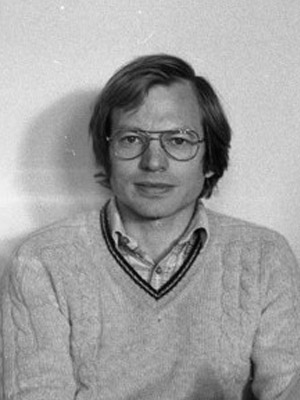
Nils Aarsæther (born 1947) from Ålesund is currently working in the Department of Social Sciences at UiT the Arctic University of Norway.
His first encounter with a university environment was at the University of Bergen where he graduated in 1973 with a major in sociology. The 26-year-old arrived at the University of Tromsø the following year. He remembers an environment of dedicated and politically engaged students.
“Many of the students were far older than me when I arrived in Tromsø for my Ph.D. position and I remember an environment filled with conflict. Most of the students believed strongly in open meetings as a decision-making body, and people to the right of the Socialist Left Party were scarce,” explained the professor in a former interview.
In the Department of Social Sciences, which at that time included philosophy, history and archeology, there was according to Aarsæther a general mistrust amongst the academics of the different fields. In addition, there were confrontations between the men and women.
Aarsæther believes his research has contributed to a social science less concerned with lofty theories and more concerned with influencing and understanding the great changes in Northern Norwegian society. Aarsæther held a clear position regarding subject and political related matters and stressed the importance of interdisciplinary collaboration.
Aarsæth was granted two dissemination awards for his work; one from the Faculty of Humanities, Social Sciences and Education in 2016 and one from UiT the Arctic University of Norway in 2017.
(Sources: Jensen, E. B. (2014), Universitetspionerene, HSL Printing Office, UiT the Arctic University of Norway, the UiT Archive)
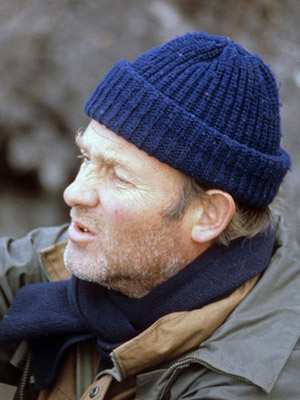
Per Mathisen grew up in Oslo and started working at UiT in 1974 on the request of Harald Eidheim.
When he started in his position at UiT, he had already done anthropological research in Troms since the 1960’s, including an extended field trip to the Ringvassøy island where he discovered a “lost” Sami community.
“Very few of the early UiT employees had this kind of experience. I already knew what I was getting myself into when I moved to Tromsø, but I had no idea, of course, how the university would develop,” said Mathisen in a former interview.
Mathisen was involved in designing the Sami studies at the university. In a former interview, Mathisen explained that he was careful to distinguish between politics and research:
“In order to have an opinion about Sami politics and Sami conditions within our society, it was important that my arguments were backed up by my research. This was always my principle as a researcher and probably contributed to my slightly unique position among the social scientists.”
Mathisen’s research focused on Sami conditions and he worked hard to establish Sami as a separate field of study at the university. However, he received criticism from the Sami community and was physically assaulted on several occasions.
“Some among the politically engaged students believed that it was not our place to have opinions regarding Sami politics or the Sami people’s past and future. These were matters for the Sami people to deal with. And in many ways, I agreed. But we were not trying to teach Sami politics, we taught anthropology,” he explained in the interview.
Per Mathisen held several political positions at the university. He was a member of the University Board during two periods under the rectorship of Yngvar Løchen and Helge Stalsberg, and he was dean while Tove Bull was rector.
(Sources: Jensen, E. B. (2014). Universitetspionerene. HSL Printing Office, UiT the Arctic University of Norway)
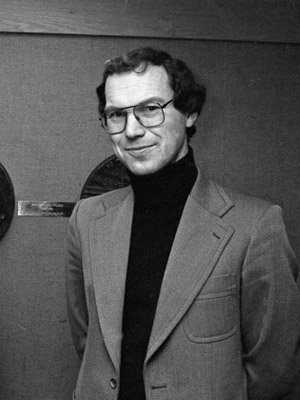
Øystein Aspaas was an assistant professor of Norwegian language at Tromsø College’s Teacher’s training program and worked to develop many new study programs at the college. He also worked as a teacher in the elementary, middle and high school and was head of studies at both the University of Tromsø and Tromsø College. He was also the director of cultural affairs in Troms County.
Aspaas holds a degree in philology from the University of Oslo. He came to Tromsø in 1970 and worked at Tromsø High School for 5 years. In time, he got a temporary position at the Department of Language and Literature at the university where he taught colloquial Bokmål (one of Norway’s two official languages) before he secured a permanent position as an advisor.
“It was interesting to participate in the building of a university department. The learning curve was steep. The relationships between the universities around the country were very positive, so people were able to get a few years of absence from the University of Oslo, for example, to help build the new university in Tromsø,” explained Aspaas in a former interview.
While working at the university during the 1980’s, he became a member of Troms County Regional College Board. At that time, there was a shortage of both training programs and skilled labor in Northern Norway and the College Board believed young Northerners had to gain their education in Northern Norway if they were to remain in the region. The council worked to establish new programs at the colleges. There was a rise in all health service education programs, including the dental hygienist program. Aspaas believed that fortune had turned their way and that the central government had finally directed its attention towards the districts:
“We felt the central government took our arguments and recommendations seriously. Those were prosperous times. We all had the feeling we were doing something very important,”
(Sources: Jensen, E. B. (2014). Universitetspionerene. HSL Printing Office, UiT the Arctic University of Norway).
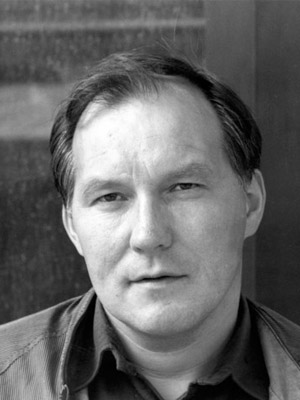
Historian Henry Mindre (born 1945) from Skånland municipality grew up in what he describes as a fully Norwegionized coastal Sami environment. Nevertheless, he considers himself Sami. He made this apparent in a former interview.
He arrived in Tromsø as a student in 1973 and quickly involved himself in the debate regarding Sami research.
“It was not a big leap for me to get involved in the Sami debate when I arrived in Tromsø. In the 1970’s almost no one, neither from media nor academia, could explain what was meant by Sami rights. Although I was affiliated with the Nordic Sami Institute (NSI), I was for the most part based here at the university. In the beginning, it was very interesting to work with both these institutes,” said Minde.
Minde was hired as an assistant professor at the UiT Department of History in 1985. At that time, the anthropologists believed they were entitled to the responsibility for all research related to the Sami population. Most of the students who considered themselves Sami disagreed with this sentiment and this led to the so-called “anthroposophical dispute”. As a result of the dispute, the university established the Centre for Sami Studies towards the end of the 1980’s and defined Sami studies as one of its priority areas. Minde was head of the Department of History at that time.
Minde developed a fascination for indigenous related issues in the early 1980’s. His main research interests are the history of Sami culture, rights and politics, as well as the indigenous movements of the Nordic countries, North America, Australia/New Zealand and Central America. He also has other research interests, including the history of the labor movement.
Henry Minde was an active member of the Sami Parliament of Norway and the Norwegian Sami Association. The 72-year-old is still involved with UiT through a professor emeritus position.
(Sources: Jensen, E. B. (2014). Universitetspionerene. HSL Printing Office, UiT the Arcic University of Norway)
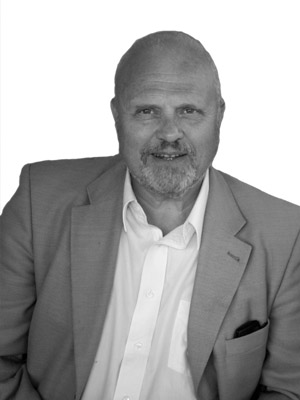
Philosopher and writer Jon Hellesnes (born 1939) grew up in Western Norway. He came to Tromsø to fill a Ph.D. position in 1972.
“I came to Tromsø for several reasons. The new university seemed appealing and I wanted a change of environment and a new place,” explains Hellesnes.
He had an important role in developing the university’s philosophy programmes, for example, he helped design the Examen Philosophicum course, a mandatory undergraduate course in philosophy, ethics and rhetorics.
“We put a lot of effort into designing the new Ex.phil. course but the teaching assistants did most of the work. In my opinion, the result was good,” says Hellesnes.
During his first years at the university, he taught practical philosophy and helped develop preliminary and advanced courses in philosophy. In 1974, he was hired as an associate professor and in the mid-1980’s he obtained a full professorship. Like many other employees, he took on several commitments in the first years after the university’s establishment.
“During the 1970’s and 80’s, I was head of the Department of Philosophy for a couple of periods,” he says.
Hellesnes was a productive researcher and published papers in both national and international scientific journals. He published several textbooks of philosophy and in 2010, he won a book award for his books Illusion (2004), On the Interpretation of Life (2007) and The Fifth Monarchy and Other Essays (2010). He also wrote several novels.
Hellesnes is a member of The Royal Norwegian Society of Sciences and Letters in Trondheim and Oslo. He was awarded an honorary doctorate at the University of Bergen. Today, the 78-year-old is still associated with the university through a professor emeritus position.
(Sources: Jensen, E. B. (2014). Universitetspionerene. HSL Printing Office, UiT the Arctic University of Norway, recent interview, Wikipedia).
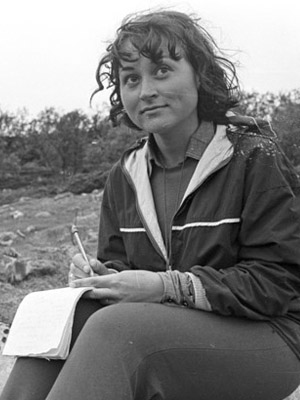
Gerd Bjørhovde (born 1943) from Harstad studied philology, Norwegian language, history and English language at the University of Oslo. She came to Tromsø in 1971 to work as an English teacher at Tromsø Teachers College.
In 1974, Bjørhovde was one of the first academics to get a position in the English program at the University of Tromsø, where she was involved in designing the new English program, something she had wanted to do for a long period.
“UiT was called the Red University in the early 1970’s because of its progressiveness. Nevertheless, there was a very small percentage of female researchers for a long time, and there were even fewer women’s studies and feminist perspectives on the various disciplines,” explains Bjørhovde.
Her research focused on female writers and feministic perspectives in literature, and she helped establish KVINNFORSK, the UiT Centre for Women’s Studies. In 1990, she was appointed a full professorship. When she was vice rector from 2002-2008, she focused on internationalizing research and education and worked towards further gender equality.
Bjørhovde was active outside of her academic career as well. She represented the Socialist Left Party in the municipal council during several periods, also as parliamentary leader. She involved herself in the local and national debates and had several responsibilities on boards and committees both locally and nationally.
“Chairing the Committee for Gender Balance in Research on the appointment of the Ministry of Education and Research from 2007-2013 is the most rewarding thing I have ever done,” she explains.
In 1993, Bjørhovde received Troms Municipality’s Award for Gender Equality for initiating the Woman’s Research Marathon, an event that was arranged for the first time in 1989 by the UiT Network for Women in Research. She also received the university’s Award for Gender Equality in 1998. The following year, she was in charge of The 7th International Interdisciplinary Congress on Women, a world conference for Women’s Studies, when it was hosted in Tromsø.
The 74-year-old is about to publish her newest book and is still active at the university through her professor emerita position.
“The University of Tromsø has been an exciting working place during all these years. I never regretted moving north after I completed my studies. It is a privilege to be able to develop oneself and to be given so many opportunities and challenges. It has not been a dull moment,” she said in a previous interview.
(Sources: Recent interview, Jensen, E. B. (2014), Universitetspionerene, HSL Printing Office, UiT the Arctic University of Norway, the UiT Archive).
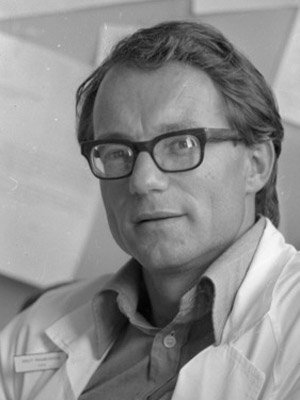
Knut Rasmussen (born 1938) from Oslo played an important role in reducing the occurrence of cardiovascular disease in Northern Norway.
He graduated from the University of Bergen and worked at Rikshospitalet -Oslo University Hospital from 1965-1973. He moved to Tromsø one year later. When working at Rikshospitalet, Rasmussen witnessed a steady flow of Northern Norwegian patients who had received insufficient treatment and examination.
“I realized that there was an inequality in the distribution of health resources and health services in Norway and that the needs in Nothern Norway were far from covered. This was definitely my main reason for moving north. It was, of course, also exciting to be part of something new,” said Rasmussen in a former interview.
In 1974, the 35-year-old became chief physician of the cardiology division at what was then called Tromsø Regional Hospital. He was going to manage the construction of clinical cardiology at the hospital and, at the same time, carry out his duties at the university. Rasmussen saw building the regional hospital as his most important task.
“That was my main priority in Tromsø. I thought the hospital was in need of major improvements. The hospital was actually of very poor quality and we quickly had to bring it up to the standard of a university hospital. There was no guarantee that we were going to succeed.”
Rasmussen worked with what he describes as an epidemic of cardiovascular disease in Northern Norway during the 1970’s:
“At that time, this epidemic was almost unknown in Southern Norway. The greatest improvement in the field is first and foremost that we are now able to examine the inside of the blood vessels, unblock them and repair them through surgery. Today, the incidence of cardiovascular disease in Northern Norway is much lower and we are able to save many more lives,” said Rasmussen in the interview.
In 1982, he started planning the new university hospital in Tromsø, a process that would take 10 years.
From 1987-1989, Rasmussen managed the Faculty of Medicine and the national survey of cardiovascular disease. He also had a strong interest in medical ethics. In 2005, the King of Norway appointed him Knight 1st Class of the Royal Norwegian Order of Saint Olav for his contribution to the Norwegian society. Knut Rasmussen is still associated with the university as a professor.
(Sources: the UiTs archives, Gamnes, J. & Rasmussen, K. (2013). Fra Fagområdet medisin til Det helsevitenskapelige universitet. Orkana Forlag AS).
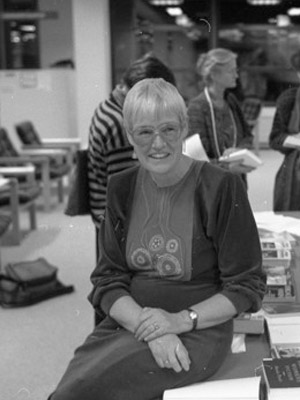
Åse Hiort Lervik (born 1933) from Oslo was the first female professor at UiT. She arrived at the newly established university as early as 1972 when she was 39 years old. Lervik has been important to the UiT Faculty of Humanities and was one of the pioneers who helped establish Women’s Studies as a separate field of research in Norway.
With a background in literary science, Lervik gained her Ph.D. in 1971 with a thesis on Ibsen’s versification in Brand. She was also a prolific writer, focusing mostly on female writers and depictions of female characters in Norwegian literature. Some of her publications are Ideal and Reality: Jonas Lie’s Portrayal of Marriage (1965), Basics of Verse in Poetry (1972, second edition 1978) and People and Environment in Cora Sandel’s Writings (1977).
From 1972-1985, she was chief editor of the scientific journal Edda -Scandinavian Journal for Literary Research.
Since 1996, the UiT Center for Women’s and Gender Research has granted an annual award in Lersvik’s honor. Over the years, the award has changed slightly. Originally, it was granted to the female UiT student with the best Master’s thesis with a focus on a women and gender topic. Since 2015, UiT has granted the Åse Hiort Lervik-Award twice; once, to the best Master’s thesis with a women's related topic and once, to the best Master’s thesis with a gender theoretic perspective.
Åse Hiort Lervik passed away in 1997, at the age of 64.
(Sources: Wikipedia, Store Norske Leksikon, the UiT Archive).
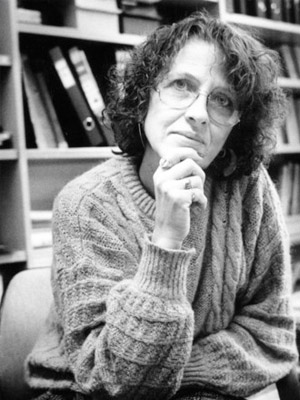
Lisbet Holtedahl (born 1946) from Copenhagen moved to Tromsø with her Norwegian husband in 1971. She started out in a position at Tromsø Museum in the Department of Sami Ethnography, which she kept until 1975.
“I came to Northern Norway because I had fallen completely in love with the region,” explains Holtedahl.
She was the first to graduate from the Department of Social Sciences at the University of Tromsø, shortly after the department’s opening in 1073. She graduated with the thesis Gender and Status in a Polyethnic Village Society: Social Organization in Maine-Soroa, Niger, which was based on one year of fieldwork in Maine-Soroa. She also did research on what it was like to be a male and female in a typical Northern Norwegian fishing village in the 1970’s in Ersfjordbotn in Tromsø. The thesis led to her Doctor Philos in 1987 and in 1993 she gained a full professorship.
“During my first years at the university, I worked with the dissemination of Sami culture and identity and did research on coastal population in general. Since then, I have done research and lectured about gender roles in Norway and Africa. For the past 30 years, I have mostly worked with visual methods in social sciences,” says Holtedahl.
Among other things, she helped build a university in Cameroon. The 71-year-old was responsible for gender research at UiT for a long period and conducted several studies on women in Norway and Africa. During the 1990’s, she changed her focus to the male role in society. Holtedahl also distinguished herself as a filmmaker and took an interest in film as a method of education and research already in the 1970’s. Her passion helped her establish visual anthropology as a separate study in 1997.
“Lisbeth is an involved researcher and a very clever and inspiring pedagog. Everyone who has been her student knows how much she values the perspectives of others, be it in Mali, Cameroon, Russia or Kvaløya Island,” wrote Associate Professor Trond Waage in an article in the newspaper Nordlys in 2016.
Lisbeth Holtedahl received the Research Council of Norway’s Award for Excellence in Communication of Science in 1996 and the Gender Equality Award from UiT in 2010. When she retired as a professor 2 years ago, she had worked at UiT for 45 years. However, she remains active in her emerita position.
(Sources: Recent interview, Wikipedia, the UiT Archive, «Visjonær professor fyller 70 år», nordlys.no (2016)).
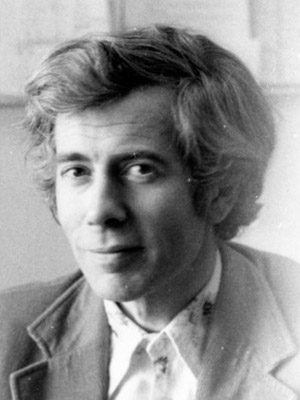
Cato Wadel (born 1936) from Oslo was a Social Anthropologist involved in developing a multidisciplinary collaboration between social research, local community research and fisheries social science research at UiT. Wadel gained his degree from the University of Bergen and was hired as an associate professor at the University of Tromsø as early as 1972. After two years, he became a professor of social sciences.
Wadels loved doing research and was mainly interested in fishing communities and other local communities in the outskirts of Norway and Newfoundland. In 2011, Wadel’s article What is Work? (1997) was selected as one of the 25 most important contributions to Norwegian sociology. He was fascinated with the relationship between the fishing fleet/industry and the local community.
“Cato had a background in anthropology but was quickly in conflict with the forthcoming anthropological trends and disciplines at the Department of Social Sciences. He had a strong multidisciplinary orientation,” said social scientist Nils Aarsæther, who was hired at UiT in 1974 and knew Wadel well.
According to Aarsæther, Wadel strived to keep the different academic environments at the Department of Social Sciences connected but had to admit defeat due to strong disciplinary tension within the department. He worked hard to establish the College of Fishery Science as a multidisciplinary institution.
“Cato was an extremely gifted lecturer and supervisor. He would captivate the students. Once, he concluded a lecture by quoting Janis Joplin in a candlelit auditorium: Freedom’s just another word for nothing left to lose. Wadel was generous and open. Unfortunately, he was burning his candle at both ends with constant cigarette smoking. He was a bit of a dreamer, either at the top or completely low,” reminisces Aarsæth.
Women and gender expert and pioneer Siri Gerrard describes Wader as a source of inspiration for most students of her generation:
“He taught sociological and anthropological perspectives in such a vivid way. He demonstrated how we as students could develop theories and concepts based on the data we collected, well anchored in classic, reputable scientific sources. For many of us, it is first and foremost his methodic perspectives conveyed through his lectures and later, through his books, that remain an important contribution to Norwegian social sciences,” says Gerrard.
Wadel left UiT in 1986 but returned in 1990 as an adjunct professor at the Norwegian College of Fishery Science (NFH). Cato Wadel published several books and scientific papers. He passed away in 2011 at the age of 75.
(Source: Wikipedia)
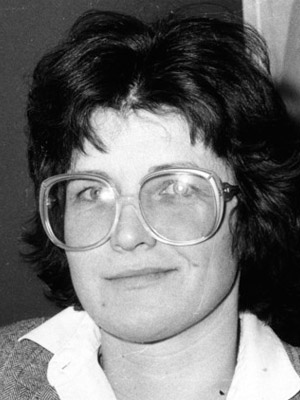
Sidsel Saugestad (born 1946) from Ringerike gained her education in Oslo and came to the University of Tromsø in 1972. Like many other pioneers, she filled several roles at the university during the first years.
“I came to Tromsø because the university offered new and interesting positions at the Faculty of Social Sciences,” explains Saugestad, who found the first years to be exciting and hectic.
“It was a fun period. I had the feeling of being part of something new and was able to influence the development of the university. I wish everyone could experience that. The various academic environments of the social sciences were much more accessible back then because we all knew each other. We were involved in developing the university and everything which that entailed. We prepared lectures, gave lectures, designed exams, and continuously evaluated the curriculum and the program. Today, many evaluations and decisions are made at levels that are not even directly involved in the education and research,” she explains.
Saugestad helped establish the university’s Department of Social Anthropology and was head of the department during several periods. She assisted in the establishment of the Centre for Sami Studies and contributed to the establishment of the only indigenous research institute in Africa to date at the University of Botswana. She also had a central role at the Center for Development and Environment (SEMUT), which was established in the 1980s.
“I have always been interested in development issues and I spent years working in Zimbabwe and Southern Africa. I brought this interest to the Center for Development and Environment. The center coordinates several activities, for example maintaining collaborations with the universities of Cameroon and Botswana,” she explains.
The 71-year-old has made analyses of the development of indigenous peoples organizations in South Africa and compared it to the development of Sami organizations. She spent two years in Botswana working for NORAD during the 1990s.
“That is probably the most important work I have done as a researcher. There are many similarities between what happened to the Sami people, for example during the forced integration, and what is now happening to indigenous people in other parts of the world,” explains Sidsel Saugestad.
Today, she holds a professor emerita position at UiT.
(Sources: recent interview, the UiT Archive)
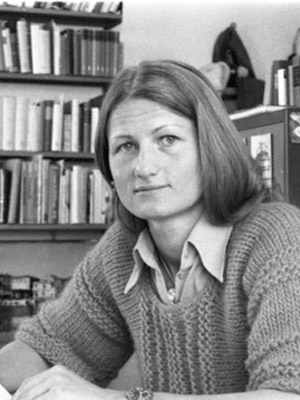
Synnøve des Bouvrie (born 1944) from the Netherlands has a background in classical philology from the University of Leiden in her home country. She came to Tromsø for family reasons in 1971, one year before the university officially opened. When the university announced the rare assistant professor position of Greek and Latin language, she applied and got the job. She was hired to teach Latin and Greek language as ancillary classes for other studies. For 22 years, Bouvrie was the university’s only teacher of these languages. In 1978, she introduced spoken Latin as a pedagogical tool in her lectures, a method which only recently gained full acceptance. In the 1980’s, she introduced classical culture as a subject to the university.
“The first years at the university were demanding because everything had to be set up from the beginning. Very few people were set to do a variety of tasks. The radical students viewed us teachers as an establishment they had to defeat. Because of my Duch background, this was an unusual scenario for me. The female employees at the university were marginal in the first years,” explains des Bouvrie.
She says literary scientist Åse Hiort Lervik, one of the university’s first employees, made her life at the university much easier.
“Åse mobilized the female employees at all the faculties. We started a feminist movement for women’s writing,” explains an engaged des Bouvrie.
She tells us openly about the lack of gender equality in the Netherlands during her childhood and teenage years. The 73-year-old describes that coming to the University of Tromsø was like a revelation.
“Here, it was normal for women to have gainful employment. Although many Duch women pursued a higher education when I was young , they never meant to enter the working market. They were going to stay at home and care for the house and children.”
Des Bouvrie helped establish the university’s Centre for Women and Gender Studies and chaired the Committee for Gender Balance during several periods.
“We reached a milestone when the Committee for Gender Balance was established in 1975,” says the woman who was one of the main initiators behind a permanent committee at the university.
During the 1970’s and 80’s, des Bouvrie arranged popular evening lectures and national conferences to bring attention to important women of our literary and cultural history. In 1990, she gained a full professorship on the initiative of Åse H. Lervik and Ingrid Broch, who believed it was time for a woman to become a professor. Since then, many more women have gained their professorship at UiT.
Des Bouvrie helped establish the Norwegian Institute at Athens in 1989, where she spent 5 years as researcher and manager from 1999-2003. Her research specialized in Greek drama, Greek mythological stories as well as women’s role in classical culture. She is still an active researcher and is about to publish a 500-page dissertation on Greek tragedy.
“I have worked on it for more than 10 years. I was not sure that I would ever publish it, much because I have had to fight so hard for my field to survive. I am very grateful that I get to experience the publishing of my dissertation,” says des Bouvrie.
(Sources: recent interview and the UiT Archive)
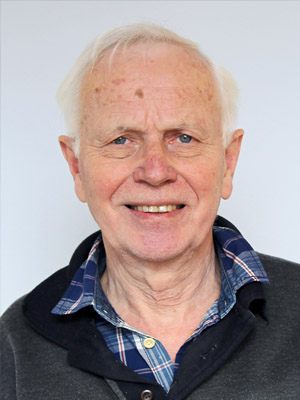
Arne R. Strøm (born 1943) from Oslo got his Ph.D. in microbiology from the Norwegian University of Science and Technology and moved to Tromsø early 1975. He was a pioneer in the field of biotechnology at UiT and a pioneer in the field of chemistry and fishery science at the Norwegian College of Fishery Science
“My main reason for moving to Tromsø was the new College of Fishery Science and a position that fit my background. Of Course, it was exciting with a new university, but in the beginning, it was very small. I worked for many years in Gjennomgangsbygget, an interim facility for students and staff,” explained Strøm.
He remembers that the employees were often left to do as they pleased, as long as they did their job.
“We were very independent. In the initial years, the fisheries college attracted large numbers of students. It was like they had been waiting for the opportunity to study fishery science. Consequently, they were highly motivated and many of the first students were older than the teachers.”
Strøm started out by teaching courses on food industry at the College of Fishery Science and continued on to teach microbiology. He was a member of the University Board for a period and was vice rector at the College of Fishery Science in the 1990’s. A research year at an Amercian university in 1982 became a shifting point for Strøm. He acquired a lot of knowledge about gene technology and upon his return to UiT, immediately established a new research group. Several members of the group took their Ph.D. in gene technology and today, 3 of his students work as professors and amanuenses at UiT. Strøm was the first in Tromsø to incorporate gene technology in his research. From 1983, the E.coli bacteria became his main research interest.
“I investigated the microbes to understand how living organisms cope with physical stress, such as high salt concentration,” he explained.
In 1995 he was offered a professorship at NTNU and moved to Trondheim.
“After 20 years in Tromsø, it was tempting to move back to Trondheim. I continued my research on microbial stress-response and later, I did research on the production of antibiotics. My son, Morten Strøm, has inherited my interest in this field and today he is a professor at UiT. I guess that is also a result of my pioneering work,” says a smiling Strøm.
“Research on microbes was my most important work in Tromsø. It was good quality research, if I may say so myself, and it is still quoted. My research group was ahead in a very important field,” continues Strøm.
He retired in 2009 and is currently professor emeritus at NTNU.
(Sources: recent interview, Sylvia Labugt and Olavi Junttila)
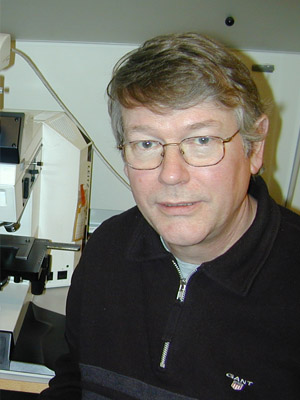
Bjørn Solheim (born 1943) from Bergen graduated from the university in his hometown and came to Tromsø as an assistant professor in January 1973. He was one of the first to be employed at the Department of Biology and Geology.
“I moved to Tromsø mainly to continue working with Jan Raa. I was his first graduate student. The idea of a new university appealed to me and the Northern Norwegian wilderness was also a determining factor. It was incredibly exciting to participate in the construction of a whole new university,” explains Solheim.
He had several administrative positions at UiT. He was head of department for two periods during the 1980’s and served as dean of the Faculty of Mathematics and Natural Sciences for 5 years from 1997-2002. During the same period, Solheim led the Research Education Committee, a committee responsible for doctoral programmes in mathematics and natural sciences.
“Bjørn was an important initiator of the new faculty we set up by merging the Department of Biology and Geology and the Department of Mathematics in 1997. He managed to soften the contrasts between the academic environments,” explains former faculty director and university pioneer Sylvia Labugt.
Bjørn Solheim was one of the main developers of the Science Center of Northern Norway.
“He deserves most of the credit. Without him, I don’t think we would have had a Science Center,” says Labugt.
His main arguments for bringing the Science Center of Northern Norway to Tromsø was to enhance recruitment to the natural sciences and technology.
“A center like this means a lot in that context. The Science Center has become nicer than I had even hoped for,” says Solheim.
He was also central to the Faculty of Mathematics and Natural Sciences’ significant recruitment work in the early 2000’s, several national natural science conferences and the international natural science conference CST 060606.
Solheim’s biggest research interest was Arctic biology. He conducted research on Svalbard for all of 18 years from 1989-2007 and introduced Arctic microbiology as a subject to the University Center in Svalbard.
He retired in 2007 after 34 years at UiT and moved back to Bergen with his family. Solheim leaves no secrecy around the highlight of his career:
“It was international collaboration regarding research and education. Working with the African exchange students and students was the most rewarding.”
(Sources: recent interview, pioneer Olavi Junttila)
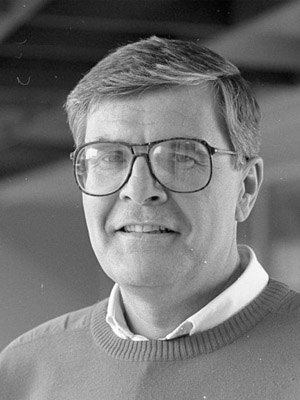
Odd Gropen (1941–2005) from Elverum graduated from the University of Oslo. He came to the new university in Tromsø in 1972 together with his former supervisor, Professor Per Njål Skancke.
Like many of the early employees, Odd Gropen had to serve several functions the first years. He taught a variety of subjects at different levels and designed a Ph.D. program. He had many political commitments at the university in Tromsø as well as other universities in Norway. He gained his full professorship at UiT in 1990. Towards the end of his career, the chemist became Dean of the Faculty of Mathematics and Natural Sciences, a position he served in for 6 years.
“Odd Gropen had a special talent for managing, developing strategies and doing structured planning. During the process of establishing the UiT faculties, Gropen argued for a merger between the Department of Biology and Geology and the Department of Mathematics and Natural Sciences,” explains Biologist and UiT pioneer Sylvia Labugt.
Gropen deserves a big part of the credit for developing the areas of theoretical chemistry and computational chemistry at UiT. The Research Council of Norway has granted the world leading UiT chemists the title of being a Norwegian Center of Excellence (SFF). The scientists have organized themselves as the Hylleraas Centre for Quantum Molecular Science and have entered their second 10-year-period of being a Norwegian Center of Excellence. The UiT research center is run in collaboration with UiO.
Gropen is best known nationally for having developed the area of supercomputing and he had a central role in establishing this as a separate field at UiT. Today, UiT hosts Fram, Norway’s most powerful computer. Gropen worked at UiT for the rest of his scientific career but had several research visits abroad. His research focused on a wide specter of theoretical chemistry. Early in his career, he worked with the structure of small molecules. Later, he developed an interest in heterogeneous catalysis, especially how to speed up chemical reactions by using metal surfaces.
“This led Gropen and Norway to the research on relativistic effects in chemistry. Gropen did his most significant work in this field by calculating an electron’s spin-orbit interaction in an exact, numerical manner,” explains Kenneth Ruud, Vice Rector of Research and Development and Professor of Chemistry at UiT.
Gropen passed away in 2005. In 2008, Hylleraas Centre for Quantum Molecular Science established the Almlöf-Gropen Memorial Lecture Series, of international caliber, to honor Gropen and his colleague Jan Almlöf, another distinguished Norwegian chemist.
(Sources: the UiTs Archive, uio.no, Professor Arne Smalås).
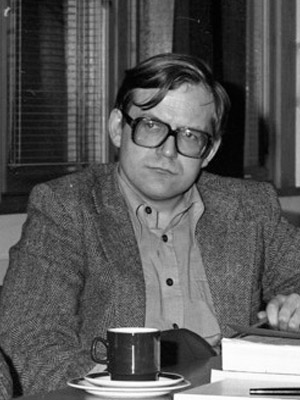
Eivind Bråstad Jensen (born 1946) from Tromsø was a pioneer in the field of pedagogy at UiT the Arctic University of Norway and helped reform the teacher’s training program in Northern Norway. He graduated from the University of Oslo with a major in pedagogy and a minor in history and Nordic studies. Jensen returned to Northern Norway in 1971. Before he embarked on his studies in the capital, he seized the first opportunity to undertake university-level studies in his hometown.
“I was part of the first group that took preliminary philosophy courses in Tromsø in 1965. It was a collaboration between the University of Oslo and Kongsbakken High School. I was young and fresh out of university so it was exciting to experience the rise of a new university in Tromsø. Everyone was happy when the Storting (Norwegian Parliament) enacted the establishment of a new university in Tromsø,” remembers Jensen.
He worked as a teacher in elementary and middle school before he was hired as an assistant professor at Tromsø Teachers College in 1974. From 1976-77 he took a year of absence to work as an assistant professor of pedagogy at the University of Tromsø. At that time, Northern Norway did not only suffer from a serious lack of medical doctors, there was also a shortage of teachers, so in 1997, the Ministry of Education and Church Affairs and the University of Tromsø commissioned Jensen and Harald Jørgensen to survey the teacher shortage.
“We visited schools in the entire region. One of the actions we recommended was to develop distance education for teacher’s training,” explains Jensen.
The distance education program started in 1979 and was very successful. The model for decentralized education was later extended to other subjects and is still used in Norway. Jensen did research on topics including school options and childhood environment for children in areas with a high Sami population in Nordland and Southern Troms. He was head of the Secretariat for the Northern Norwegian Council of Higher Education during the 1980’s and head of communications at UiT from 1996-1999.
Jensen always focused on communicating to the general public through newspapers, periodicals and through his own books. The 71-year-old is, in fact, a very prolific writer.
“I have written a lot about UiT’s history and research and about the teacher training’s feeble start in Northern Norway,” explains Jensen.
He wrote The University Pioneers: A Collection of Interviews by Eivind Bråstad Jensen based on interviews with many of the UiT pioneers. Ravnetrykk Publishing House recently republished the book with a new layout. The 71-year-old is still active as a writer and as professor emeritus at UiT.
“I have made my hobby into a living. I feel very fortunate. I will never be able to stop writing,” says a smiling Eivind Bråstad Jensen.
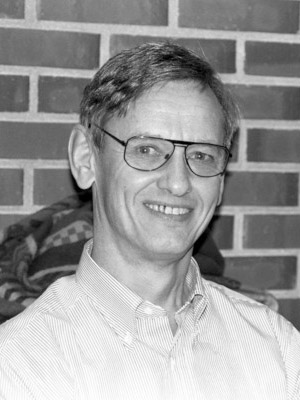
Anders Klemetsen (born 1938) from Skien is one of the pioneers behind the Norwegian College of Fishery Science (NFH) at UiT and established freshwater biology as a separate field of study at the university. He holds a degree from the University of Oslo and moved to Tromsø in 1968 for a Ph.D. position at Tromsø Museum.
“The exciting plans for the new university lured me to Tromsø,” explains Klemetsen.
In 1971, he was hired as one of the first assistant professors at the university in the Department of Biology and Geology (IBG). His first years in Tromsø were mainly devoted to building the new university. His research was often put on hold.
“The first years in Tromsø were chaotic at best. We were very few people set to design the new university and were pulled into numerous boards and committees. Those first years were so much fun,” he explains.
Klemetsen was a student representative on the Interim Board during two periods from 1969-1971. He chaired the expert committee for fishery science from 1970-1972, where they submitted the recommendation to open Fishery Science Studies and the Norwegian College of Fishery Science. Klemetsen also helped design the FRAM Centre (the Far North Research Centre for Climate and Environment) from 1994-1997 and managed the center’s establishment of the Norwegian Institute for Nature Research (NINA).
His research mainly focused on the ecology and evolution of wild salmon stocks and other freshwater fish. In 1980, Klemetsen and Per Grotnes commenced UiT’s research on Takvatnet, a lake in Central Troms. Their research contributed significantly to the lake becoming the most studied lake in Norway. UiT biologists are still studying the 15 square kilometers lake, many of them being Klemtsen’s students.
“Takvatn was originally a trout lake but when charr was introduced, they completely dominated the lake. In the 1980’s they extracted nearly 700.000 fish from the lake and the charr stock was reduced by 80 percent. This changed the ecology of Takvatn and the large-growing trout and charr returned,” explains Klemetsen.
Twenty-four master’s theses, 8 Ph.D. theses and about 90 international publications are written based on studies of this lake.
“I have done a lot of research on Charr as a fish model. Charr is the most northern freshwater fish and has a unique ability to adapt to ecologically driven change. Tromsø has been leading in the international field of freshwater ecology for a long period,” says Klemetsen, who is proud of what he has achieved in Tromsø.
In June, the still active 79-year-old is giving a presentation at an American university about the long-term research at Takvatn. Anders Klemetsen received the NFH Golden Needle Award for his significant contribution to fishery science. He is still a professor emeritus at UiT.
(Sources: recent interview, pioneer Sylvia Labugt, the UiT Archive).
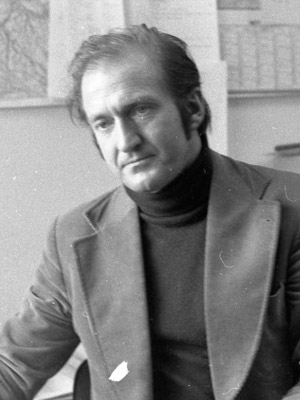
Abraham Hallenstvedt (born 1935) from Sandefjord is probably the greatest pioneer behind the Norwegian College of Fishery Science (NFH) at UiT. He developed an early interest in how the fishing industry was organized. Hallenstvedt was a Ph.D. student at the University of Oslo when he was offered a position in the Department of Social Sciences at the University of Tromsø in 1974.
“It seemed like a fantastic opportunity for a young, enthusiastic Ph.D. student. Moving to Tromsø also made sense because I had agreed to write down the history of the Norwegian Fishermen’s Association. Tromsø appeared to be a suitable location for such a job,” explained Hallenstvedt in an earlier interview.
He became chairman of the UiT fishery science board as early as 1974 and in 1980, he became a professor.
“Being on the fishery science board, quickly made me realize that we had to create a separate department at the university for fishery science,” said Hallenstvedt who placed himself in the forefront for establishing the new department.
Back then, the Norwegian College of Fishery Science was an umbrella organization, belonging to several educational institutions. In January 1977, the Department of Fishery Science became a reality. Hallenstvedt was part of the University Board at that time and was present at the meeting when they decided to establish the department. He described it as “a great moment”.
He also played an important role in the process of establishing NFH in Tromsø. He chaired the NFH board from 1978-1984, when the board decided that NFH should be located in Tromsø. This was accomplished in 1988.
“Bringing NFH to Tromsø was the most important thing I did while I was here,” says a smiling Hallenstvedt.
He published the book Law and Organization in 1982.
“The book concluded that the export industry turned its back on the market because it was overly concerned with the distribution process in the Norwegian fishing industry. The book was read by several ministers of fisheries and coastal affairs, who needed insight into a very inaccessible organization while controlling the export in the Norwegian fishing industry. In reality, the fish producers had no export rights. It was a paradox,” said Hallenstvedt.
Law and Organization was an important contribution to changing the export law in 1990.
“Abraham pointed out the limitations of the export law before it was changed. The changes enabled the Norwegian fish producers to export their goods,” says Terje Martinussen, head of Department at the Norwegian College of Fishery Science and former student of Hallenstvedt.
He describes Hallenstvedt as a competent and efficient advisor.
“Abraham stressed that one of the most important things when writing a dissertation is to set the finishing date. He said: “It takes the time it is given.” I found that very reasonable and I have followed his advise since,” says a chuckling Martinussen.
When Hallenstvedt started to do research on the fishing industry, it was not possible to collect data about the exported fish until the following fall. He got the approval he needed to establish a research position in fishery statistics at UiT in 1978. Shortly thereafter, the university developed a database for the fishing export and competence for analyzing the export data. This was an important basis for the later establishment of the Norwegian Seafood Council in Tromsø.
“Abraham’s work was important for the Norwegian College of Fishery Science and for Norway as a fishing nation,” says Martinussen.
Hallenstvedt served as an advisor for several ministries. When he retired in 2002, he was professor emeritus for 8 years, before he returned to his home in Sandefjord.
(Sources: recent interview, Jensen, E. B. (2018) Universitetspionerene - en intervjusamling ved Eivind Bråstad Jensen. Ravnetrykk, HSL Printing Office, UiT. Terje Martinussen, the UiT Archive).
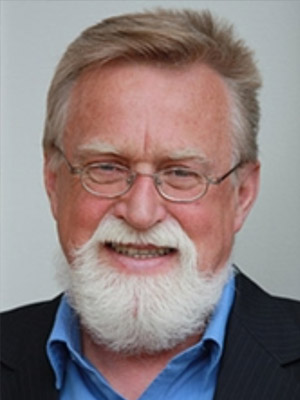
Bjørn was born in Oslo in 1947. He was a student at Eikeli High School where he focused on natural sciences before moving to Baltimore, USA as an exchange student. He returned home to complete his high school degree at Oslo Commerce School. He did his military service in Central Troms and took preliminary courses at the University of Tromsø.
He developed a love for Northern Norway but decided to study sociology, philosophy and economics at the University of Oslo from 1970-1972. He moved to Tromsø in the spring of 1973 to do his Ph.D., which he completed in the spring of 1976 with a dissertation on planning and regional policy called Are they Building the Country?
He was hired at the Norwegian College of Fishery Science (NFH) at UiT in 1980 where he helped develop the fisheries management studies. In 1998, he helped design a new topic called International Fisheries Management. Hersoug was rector at NFH for two periods.
“I also taught organization, planning and fisheries management,” he explains.
The fisheries scientist reached his audience through travels, fieldwork and talks on popular science for more than 30 years. His books Fishing in a Sea of Sharks, Unfinished Business, Closing the Commons and The Institutional Challenge have influenced the fishing industry and the fishery management.
“I have taken part in the public debate about fishery and aquaculture policies as a researcher, lecturer and administrator. I believe we have placed NFH and UiT on the map, not only in Norway but in Africa, Asia and Latin America as well. The Norwegian College of Fishery Science is actually a much greater trademark abroad,” says Bjørn Hersoug, who currently works as a professor at NFH.
